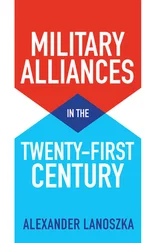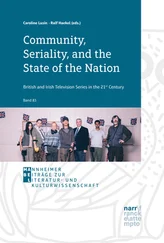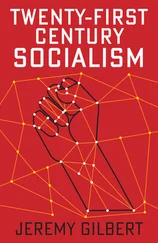The other exiled civilian ex-prime minister, Nawaz Sharif, was none of these things and, having been the victim of General Musharraf’s coup, was considerably less inclined to cooperate with his defenestrator. So Nawaz was returned to exile in Saudi Arabia when he attempted to come home and, when that ploy did not work (the Saudis having no particular desire to take Benazir’s side over his), was disqualified from running for office on the risible grounds that his attempts as an elected prime minister to prevent a coup against himself amounted to hijacking and terrorism. This left the field free for Benazir to do sufficiently well in the elections to become prime minister of Pakistan for a third time.
Her first two stints had, however, been inglorious. From 1988 to 1990 she had been overawed by the military, whose appointed president duly dismissed her from office on plausible charges of corruption, mainly involving her husband, Asif Ali Zardari, who had acquired the nickname ‘Mr Ten Percent’. Her second innings (1993–96) was, if anything, worse: charges of rampant peculation (and administrative adhockery) mounted, even as her avowedly moderate government orchestrated the creation of the Taliban in neighbouring Afghanistan. This time it was a president of Pakistan from her own party who felt obliged to dismiss her. To assume that a third stint would have been any different requires a leap of faith explicable only by the mounting international anxiety over Musharraf’s fraying rule.
But Benazir’s true merit lay in the absence of plausible alternatives. She was no great democrat — as her will, appointing her husband and nineteen-year-old son to inherit her party, confirms. The Bhuttoist ethos is a uniquely Pakistani combination of aristocratic feudalism and secular populism. To her, democracy was a means to power, not a philosophy of politics. But the same was true of the other contenders in Pakistan’s political space — the conservative Punjabi bourgeoisie represented by Nawaz Sharif, the moderate pro-militarists grouped around Musharraf, the deeply intolerant Islamists and the assorted regionalist and sectarian parties whose appeal is limited to specific provinces. Musharraf knew that all that elections would ensure was a temporary rearrangement of the balance of forces among these diverse elements. But it would enable him to remain in charge as a ‘civilian’ president while portraying his Pakistan — more credibly than heretofore — as the last bastion of democratic moderation in the face of the Islamist menace. When this hope collapsed and Musharraf went into exile, the ascent of Benazir’s widower, Asif Ali Zardari, to the presidency meant that a civilian of dubious repute — and one with very little ability to resist the entrenched power of the military behind the scenes — had now to assume this mantle.
Democrats in India may well believe that the Pakistani people deserve better, but it is difficult to imagine a viable alternative to military rule, cloaked to a greater or lesser degree in civilian raiment. As explained earlier, the central fact of Pakistani politics has always been the power of the military, which has ruled the country directly for thirty-two of its sixty-four years of existence and indirectly the other half of the time. The military can be found not only in all the key offices of government, but running real-estate and import — export ventures, petrol pumps and factories; retired generals head most of the country’s universities and think tanks. The proportion of national resources devoted to the military is by far the highest in the world. Every once in a while a great surge of disillusionment with the generals pours out into the streets and a ‘democratic’ leader is voted into office, but the civilian experiment always ends badly, and the military returns to power, to general relief. The British political scientist W.H. Morris-Jones once famously observed that the only political institutions in Pakistan are the coup and the mob. Neither offers propitious grounds for believing that an enduring democracy is around the corner.
The elections that created Pakistan’s current civilian government saw Benazir’s party benefiting from a sympathy vote after her killing, but in the absence of a charismatic leader, it was inevitably obliged to come to an accommodation with the generals. Despite widespread anger at Musharraf’s failure to protect Benazir, his successor, General Kayani, determines how far the civilian government can go on all the issues that matter to the country, and his personal authority has been confirmed by a three-year extension of his tenure beyond the scheduled retirement age. Kayani, a former head of the ISI, knows how useful the Islamist militants are to his military goals, but he is also conscious that his men have lost control of many of the more wild-eyed elements they had previously encouraged and funded. The result is a particularly delicate version of running with the hare and hunting with the hounds. The Islamists, who have never won more than 10 per cent of the popular vote nationally, fared even worse electorally in the aftermath of Benazir’s killing; most people assume her killers were religious fundamentalists. The Islamist sympathizers in the Pakistani military, of whom there are many in key positions (notably in the ISI), are also on the defensive in the face of popular fury at Benazir’s murder and the assaults on Pakistani military installations (IGHQ Rawalpindi and the naval base in Mehran, near Karachi) by Islamist fundamentalists. The great danger in Pakistan has always lain in the risk of a mullah — military coalition. The death of Benazir and the events in its aftermath have made that less likely for now, and that may remain her most significant legacy.

International affairs all too often seems a weighty subject, full of complexity and nuance, laden with portents of tension and conflict. No wonder it lends itself to overly solemn treatment, full of abstract analyses and obscure allusions: the relations between countries, it is usually assumed, cannot be understood through the recitation of trivial anecdotes.
True enough. And yet sometimes a minor incident, a tempest in a teacup, can illuminate broader foreign policy challenges. Something of this nature happened in the hot summer of 2011, when Aatish Taseer, the estranged son (by an Indian mother) of the assassinated Governor of Pakistani Punjab Salman Taseer, wrote a searing column in the Wall Street Journal , with the provocative title ‘Why My Father Hated India’, on the pathologies of hatred that in his view animated Pakistan’s attitude to our country.
‘To understand the Pakistani obsession with India, to get a sense of its special edge — its hysteria — it is necessary to understand the rejection of India, its culture and past, that lies at the heart of the idea of Pakistan,’ Aatish Taseer averred. ‘This is not merely an academic question. Pakistan’s animus toward India is the cause of both its unwillingness to fight Islamic extremism and its active complicity in undermining the aims of its ostensible ally, the United States.’
He went on to make his point in language that was sharp and, at least to this reader, heartfelt and accurate. I do not know Aatish Taseer, nor had I met his colourful father, but I have admired the young man’s writing, particularly his poignant ruminations on Salman Taseer’s murder by his Islamist bodyguard earlier this year. So I was surprised to see the outraged reactions his article provoked from Pakistani liberal journalists. A number of them whose ideas I have appreciated and whom I ‘follow’ on the social networking site Twitter — the likes of Marvi Sirmed and Mosharraf Zaidi, widely respected progressive thinkers both — reacted with rage and derision. One of them, the estimable Ejaz Haider, who has penned some courageous pieces in the Pakistani press criticizing his own country and some morally deplorable ones defending Hafiz Saeed, went so far as to author an entire column to disparage and deconstruct Aatish Taseer’s.
Читать дальше













